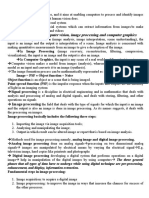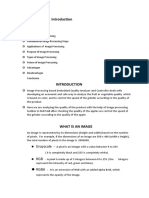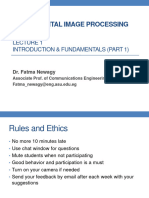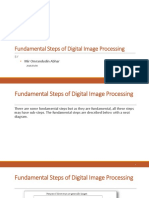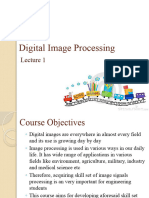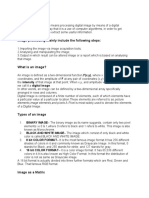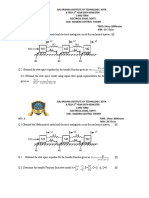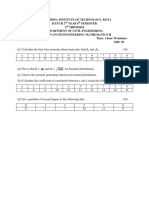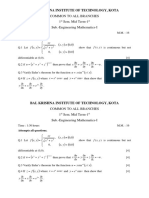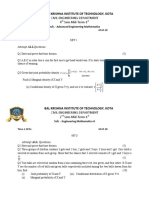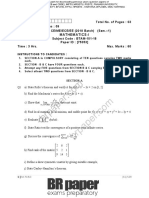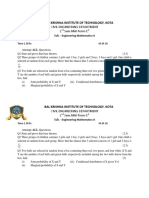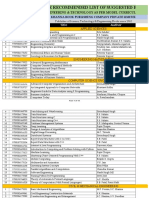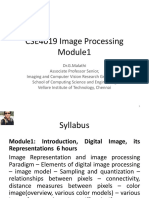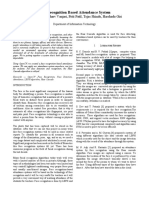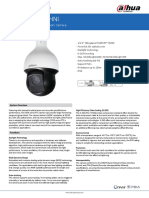0% found this document useful (0 votes)
143 views5 pagesIntro to Image Processing Basics
This document discusses image processing and provides definitions and examples of key concepts. It begins by defining image processing as a method to enhance images or extract information from them. It then discusses the basic steps of importing, analyzing/manipulating, and outputting images. The document also differentiates between analog and digital image processing methods. It provides examples of sources for digital images and covers topics like image acquisition, preprocessing, enhancement, and applications in areas like transportation and remote sensing.
Uploaded by
Tripti GuptaCopyright
© © All Rights Reserved
We take content rights seriously. If you suspect this is your content, claim it here.
Available Formats
Download as PDF, TXT or read online on Scribd
0% found this document useful (0 votes)
143 views5 pagesIntro to Image Processing Basics
This document discusses image processing and provides definitions and examples of key concepts. It begins by defining image processing as a method to enhance images or extract information from them. It then discusses the basic steps of importing, analyzing/manipulating, and outputting images. The document also differentiates between analog and digital image processing methods. It provides examples of sources for digital images and covers topics like image acquisition, preprocessing, enhancement, and applications in areas like transportation and remote sensing.
Uploaded by
Tripti GuptaCopyright
© © All Rights Reserved
We take content rights seriously. If you suspect this is your content, claim it here.
Available Formats
Download as PDF, TXT or read online on Scribd
/ 5


